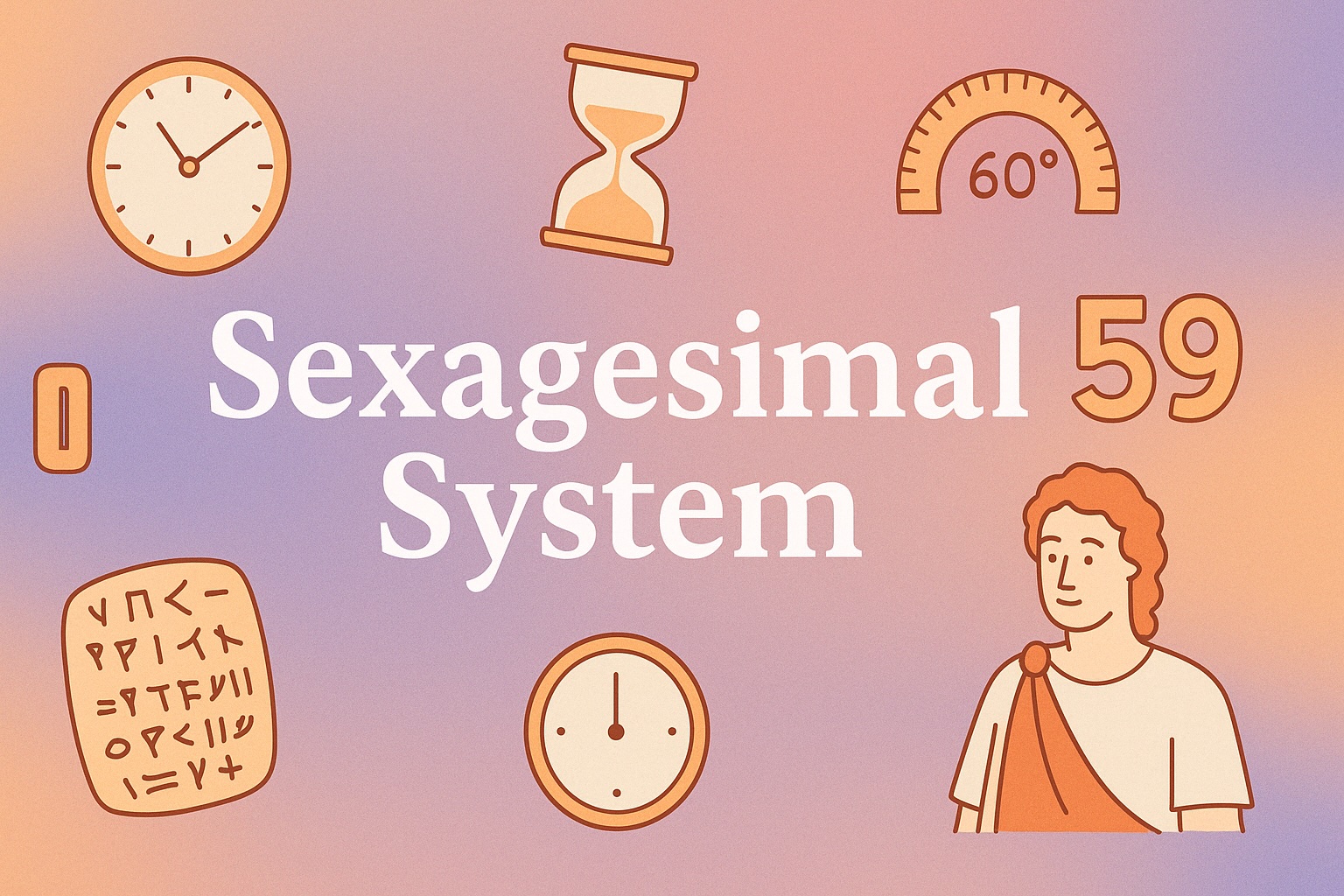What is the sexagesimal system? – The difference between decimal and sexagesimal systems
The sexagesimal system is a method of representing numbers in which units are grouped in sets of 60, and every time 60 units are collected, the value advances one place. In the decimal system, ten ones make a ten, ten tens make a hundred, and so on—each time 10 units are gathered, the digit increases by one place.
The sexagesimal system (base-60) refers not to a different kind of number, but to a different way of expressing numbers. Just as saying “one, two, three” in English and “一、二、三” in Japanese represent the same numbers, the sexagesimal system is simply another representation format.
Today, we primarily use the decimal system, while computers use the binary system. The sexagesimal system is used in clocks and in measuring angles.

Time and the Sexagesimal System
Let’s take a closer look at how time relates to the sexagesimal system. A day is divided into 24 hours, and each hour is divided into 60 minutes, with each minute further divided into 60 seconds. The number “60” here reflects the concept of the sexagesimal (base-60) system. In other words, time is measured based on 60.
For example, what happens after 59 minutes? In the decimal system, it would simply be “59 + 1 = 60.” However, in timekeeping, it rolls over to 0 minutes and 1 hour is added. That is, once it exceeds 60, it moves to the next unit — just like place values increase in positional numeral systems.
The Sexagesimal System Born in Mesopotamia
The sexagesimal (base-60) system originated in a country called Babylonia, which flourished long ago in southern Mesopotamia. The word Mesopotamia comes from Greek and means “the land between two rivers.” These two rivers are the Tigris River and the Euphrates River, and the region that makes up present-day Iraq was once the heart of ancient Mesopotamia.

The Babylonians and Their Revolutionary Positional Number System
The Babylonians invented a groundbreaking method of writing numbers known as the positional numeral system. Long ago, in ancient Babylonia, highly advanced mathematics and astronomy developed.
Cuneiform tablets written in base-60 (sexagesimal) numerals were buried in the ruins of Mesopotamia and forgotten for centuries. However, the base-60 system managed to survive throughout history and has been passed down to the present day. The use of “minutes” and “seconds” in measuring time and angles originates from Babylonia.
Different Ways to Represent Numbers
The method of expressing numbers using symbols is called a numeral system. Today, we commonly use the decimal (base-10) system, but it took humanity a very long time to arrive at this system.
The decimal system we use today with Arabic numerals (0, 1, …, 9) did not become widely used in Europe until the 15th century—a full 4,000 years after the Babylonians invented the base-60 system.
Summary
The sexagesimal system, or base-60 numeral system, is a method of expressing numbers in which the value increases by one place every 60 units—unlike the decimal (base-10) system we commonly use today. This unique counting method is still used today in time (60 minutes = 1 hour, 60 seconds = 1 minute) and angle measurement (degrees, minutes, seconds).
The sexagesimal system was invented in ancient Mesopotamia, particularly in Babylonia, where advanced mathematics and astronomy flourished. The Babylonians developed an early place-value numeral system, which they recorded using cuneiform symbols on clay tablets—many of which have been uncovered through archaeological excavations.
Our modern units of hours, minutes, seconds, as well as angular degrees, can be traced back to Babylonian mathematics. This system, developed over 4,000 years ago, has survived through the ages and continues to influence how we measure time and space today.

